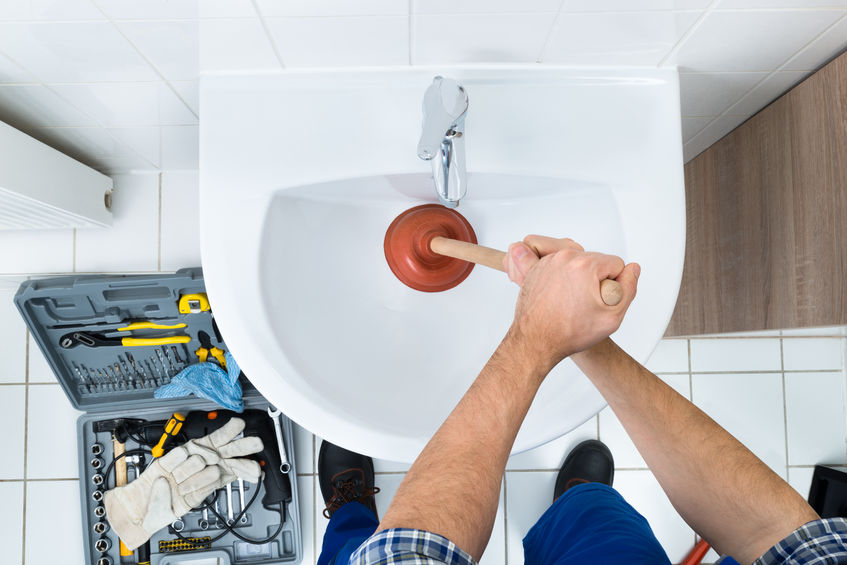Efficient Plungers and Drain Cleaner Methods: Best Approaches
Efficient Plungers and Drain Cleaner Methods: Best Approaches
Blog Article
Have you been in search of details on How to Unclog Your Sink with a Plunger?

Intro
Correct maintenance of household drains pipes is necessary for stopping clogs and guaranteeing smooth water flow. One of the trick tools in every house owner's toolkit is the plunger, together with different drainpipe cleansers created to take on stubborn obstructions successfully. This short article explores just how to make use of plungers and drainpipe cleansers properly to maintain your drains moving freely.
Area 1: Recognizing Bettors
Kinds of Plungers
There are several kinds of bettors available, each created for various kinds of drains pipes and clogs. One of the most usual kinds include mug plungers, flange plungers, and accordion bettors.
Exactly How Plungers Job
Plungers service the principle of producing stress and suction to dislodge clogs. When correctly applied over a drainpipe, they produce a vacuum that can pull out particles or break up clogs.
Selecting the Right Plunger
Choosing the appropriate plunger relies on the type of drainpipe and the nature of the clog. Mug plungers are optimal for sinks and tubs, while flange bettors are better suited for toilets due to their style.
Usual Errors with Plungers
Avoiding these errors ensures reliable plunging: improper seal around the drain, inadequate pressure, and unclear surrounding particles.
Section 2: Using Plungers Successfully
Preparation
Prior to diving, make certain the plunger covers the drain completely and forms a tight seal. Clear any kind of visible particles around the drainpipe opening.
Technique
Begin with mild diving movements to construct suction. Boost stress gradually, making use of a stable rhythm. Repeat as essential till the drain gets rid of.
Fixing Tips
If plunging does not work, attempt readjusting the seal, using petroleum jelly for a much better seal, or using a various type of plunger.
Area 3: Recognizing Drain Cleaners
Sorts Of Drainpipe Cleaning Company
Drain cleaners can be chemical or enzymatic. Chemical cleaners make use of strong chemicals to dissolve obstructions, while chemical cleaners utilize natural enzymes to break down organic matter.
Exactly How Drainpipe Cleaning Company Work
Chemical cleaners respond with obstructions to liquify them, while chemical cleansers break down organic products like hair and oil without harming pipelines.
Security Factors to consider
Constantly wear handwear covers and eye security when using chemical drainpipe cleansers. Make certain sufficient ventilation and adhere to supplier directions thoroughly.
Eco-Friendly Alternatives
Consider using vinegar and baking soda or enzyme-based cleaners for environment-friendly options that are much safer for pipelines and the environment.
Area 4: Using Drainpipe Cleaners Efficiently
Application Techniques
Pour chemical cleansers straight right into the drainpipe opening. Allow them to benefit the advised time prior to purging with warm water. Chemical cleaners must rest over night.
Safety measures
Avoid blending various kinds of cleansers, as this can create poisonous fumes. Never make use of chemical cleansers in conjunction with a plunger, as splashing can occur.
Taking Care Of Persistent Clogs
For relentless obstructions, consider utilizing a plumbing serpent or calling a professional plumbing professional to stop damages to pipelines.
Conclusion
In conclusion, recognizing just how to use bettors and drain cleaners efficiently is essential for preserving healthy and balanced plumbing systems. By selecting the right tools and techniques, home owners can take on minor clogs and protect against significant pipes concerns down the line.
How to Use a Plunger to Unclog a Drain
The humble plunger is a simple yet effective tool for breaking clogs in sinks, tubs and toilets. This handy tool is easy to use. You can make the most of its power if you understand how it works. Ready to dive in? Here’s what you need to know.
Safety First!
Never use a plunger with drain chemicals. Water will splash as you work, and the chemicals can spatter, burning skin and eyes. It’s a good idea to use rubber gloves and wear safety goggles when you work on a clog.
Choose the Right Tool for the Job
Plungers come in two different styles. Sinks, bathtubs and showers require a cup plunger. Like its name suggests, the rubber end is shaped like a cup. Use a flange plunger on toilets. These plungers have a rubber funnel extending from the cup. A plunger needs to be big enough to cover the drain.
Ready, Set, Plunge!
Coat the rim: Coat the plunger rim with petroleum jelly. This helps make a better seal.
Block outlets: Hold a wet rag over nearby outlets such as the overflow vent or the drain in a second sink.
Release air: Insert the plunger at an angle into the water. Water will displace air in the cup. A water-filled cup is more forceful than one filled with air.
Keep the plunger upright: Hold the plunger perpendicular to the drain. Use fast, forceful strokes, but make the first stroke gentle. The first stroke can create a splash if the cup still contains air. Thrust the plunger 15 to 20 times.
Snap off the plunger: The final stroke should be a strong upward motion that ends when the plunger snaps off the drain.
Repeat the process: you may need to repeat this sequence several times. When the water drains away, your work is done. High-five! https://plumbernw.com/blog/how-to-use-a-plunger-to-unclog-a-drain/

Application Techniques
Pour chemical cleansers straight right into the drainpipe opening. Allow them to benefit the advised time prior to purging with warm water. Chemical cleaners must rest over night.
Safety measures
Avoid blending various kinds of cleansers, as this can create poisonous fumes. Never make use of chemical cleansers in conjunction with a plunger, as splashing can occur.
Taking Care Of Persistent Clogs
For relentless obstructions, consider utilizing a plumbing serpent or calling a professional plumbing professional to stop damages to pipelines.
Conclusion
In conclusion, recognizing just how to use bettors and drain cleaners efficiently is essential for preserving healthy and balanced plumbing systems. By selecting the right tools and techniques, home owners can take on minor clogs and protect against significant pipes concerns down the line.
How to Use a Plunger to Unclog a Drain
The humble plunger is a simple yet effective tool for breaking clogs in sinks, tubs and toilets. This handy tool is easy to use. You can make the most of its power if you understand how it works. Ready to dive in? Here’s what you need to know.
Safety First!
Never use a plunger with drain chemicals. Water will splash as you work, and the chemicals can spatter, burning skin and eyes. It’s a good idea to use rubber gloves and wear safety goggles when you work on a clog.
Choose the Right Tool for the Job
Plungers come in two different styles. Sinks, bathtubs and showers require a cup plunger. Like its name suggests, the rubber end is shaped like a cup. Use a flange plunger on toilets. These plungers have a rubber funnel extending from the cup. A plunger needs to be big enough to cover the drain.
Ready, Set, Plunge!
Coat the rim: Coat the plunger rim with petroleum jelly. This helps make a better seal. Block outlets: Hold a wet rag over nearby outlets such as the overflow vent or the drain in a second sink. Release air: Insert the plunger at an angle into the water. Water will displace air in the cup. A water-filled cup is more forceful than one filled with air. Keep the plunger upright: Hold the plunger perpendicular to the drain. Use fast, forceful strokes, but make the first stroke gentle. The first stroke can create a splash if the cup still contains air. Thrust the plunger 15 to 20 times. Snap off the plunger: The final stroke should be a strong upward motion that ends when the plunger snaps off the drain. Repeat the process: you may need to repeat this sequence several times. When the water drains away, your work is done. High-five! https://plumbernw.com/blog/how-to-use-a-plunger-to-unclog-a-drain/

I am just very interested in Tips on How to Effectively Use a Plunger and I'm hoping you appreciated the entire entry. For those who enjoyed reading our blog entry kindly consider to pass it around. I recognize the value of your readership.
Maintenance Sign-Up Report this page